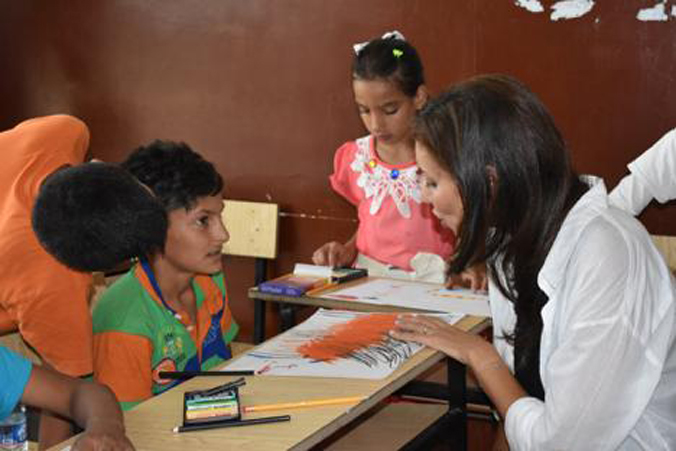
Reem Bassous, a Leeward Community College art instructor, knows that the strength of memories and the curative power of art are a powerful combination. This past summer, Bassous travelled to Lebanon where she worked with young students at Bar Elias and Kabas schools. As part of a project to give Syrian refugee children access to art education and creative outlets, Bassous helped these students invoke memories and draw upon their experiences in a positive and engaging way.
As a survivor of the Lebanese War herself, Bassous understands that art is an integral part of education for children who have lived through war and other traumatic experiences. Having a creative outlet can be a therapeutic way to process tragedies and encourage expression rather than suppression of emotions. Knowing this, Bassous set out to work with at least 50 children at Bar Elias school. With bright-colored oil pastels in hand, she guided and encouraged them to think of colors and shapes reflecting specifics of a memory.
Art is an integral part of education for children who have lived through war and other traumatic experiences. Having a creative outlet can be a therapeutic way to process tragedies and encourage expression rather than suppression of emotions.
Bassous used Leeward CC student artwork to show the children how art can capture a memory and express emotion. Memories that students chose to draw were varied but many pictures had common themes. Children drew deceased family members, their homes and fleeting memories of remembered events. Some events were traumatic, such as a missile exploding in front of their home while others drew happy times with family members eating at a dining table.
Even though some of them don’t remember their homes in Syria, it became evident that they were drawing images of their imagined home, based on memory or on stories told to them by their parents. Images of home were often meticulously detailed with flowers, outdoor chairs and a smiling mother in the garden. “These signify the presence of hope,” Bassous says.
Overall, Bassous believed the exercise to be successful at achieving its goals. Children were eager to participate even if they claimed they “can’t draw” and were able to tap into their memory bank to express a significant moment in their life. Bassous believes that this expression and a sustained art practice can benefit these children for years to come as a therapeutic and creative outlet.
—By Kathleen Cabral

